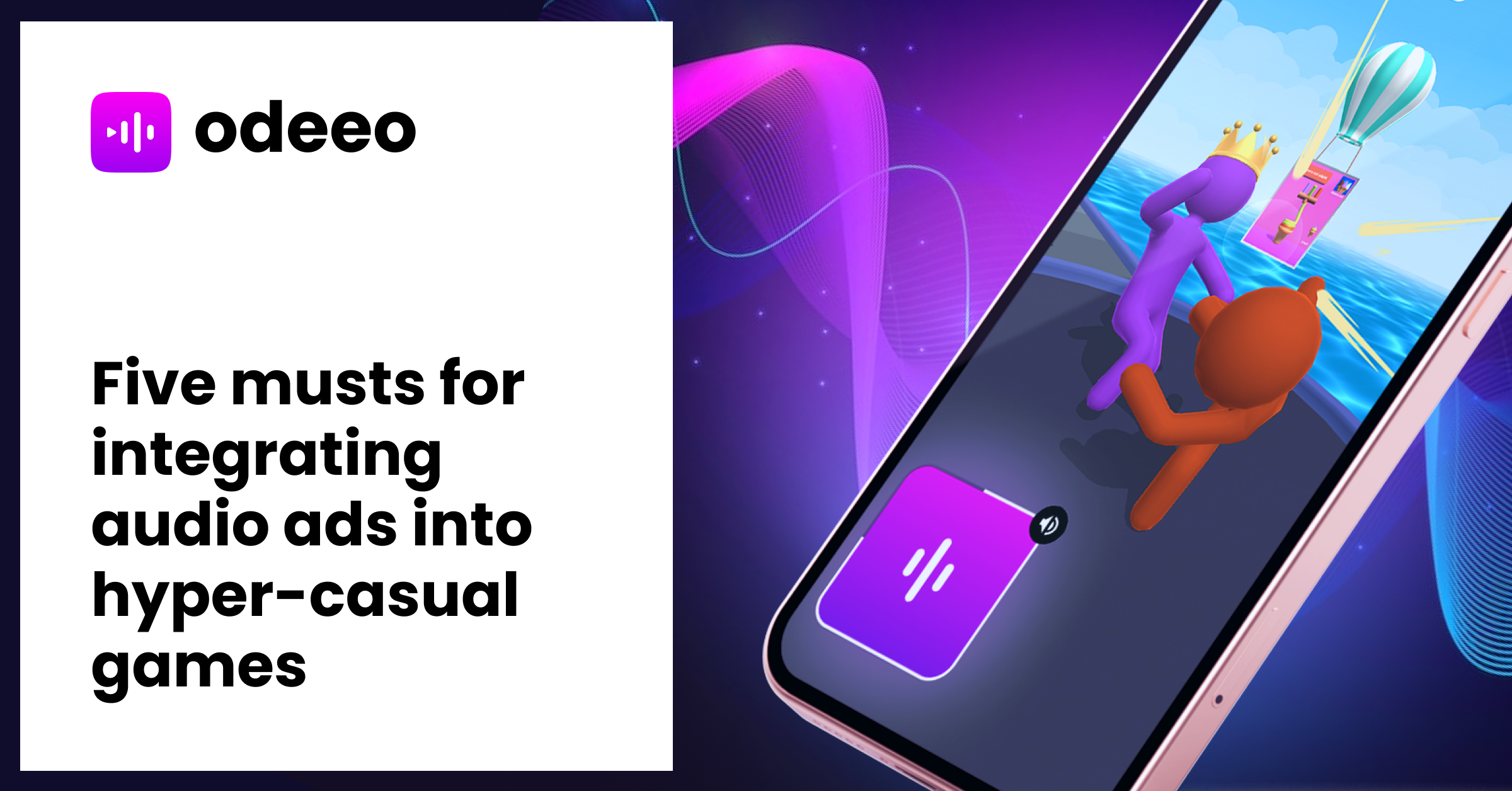It’s becoming harder to make money developing hyper-casual games. New rules from app stores, like the recent Google Play store changes, are restricting ad opportunities. Little by little, studios are seeing their revenues constrained.
But a new revenue stream has arrived – one that works in parallel to a studio’s existing ad revenue strategy. It’s in-game audio. Using audio ads, we’ve already seen studios increase their ARPDAU by 4%–7% in the US. It doesn’t cannibalize their existing revenue stream. It doesn’t negatively affect playtime or retention. And it doesn’t take extensive development to implement.
Even with easy integration, we know that no solution is as simple as flipping a switch. Here are a few tips to make sure developers can maximize their revenue with audio ads.
1. Mind the position and size
It’s worth noting that audio ads do have a visual component (an icon) to give context to the audio ad. Therefore, it’s important to consider the size and position of that icon. Make sure it’s optimal: that it doesn’t cover any content, sits at the side of the screen, and isn’t too big.
2. Add audio ad units as early in your game as possible
Developers should consider using audio ads just after they start running their usual interstitial ads in order to enjoy the highest revenue incrementality audio ads can bring.
3. Put audio into your gameplay intervals
Look at each interval as a monetization opportunity. Typically the interval between interstitial ads is around 30 seconds, even if the player completes a level earlier. That’s why it’s best to base on the interval, rather than level breaks, and start the audio ad right after the interstitial ends.
Keep in mind it’s important that the audio ad runs in full to maintain a high LTR (Listen Through Rate – the amount of ads finished divided by the amount of all the ads played). Low LTR may lead to lower eCPMs and less traction from the advertisers.
4. Test how often you use audio
How often should developers run audio ads? Should it be in every interval? Every second or third? This is purely dependent on the game itself. Run tests and keep an eye on all of your metrics, not just your revenue, in search of the sweet spot where the revenue and other game metrics are as optimal as possible.
We’ve seen that audio ads have minimal adverse impact on retention and playtime. but it’s best to run A/B tests to determine how often audio ads should run. This way, developers can maximize their revenue without harming their other key game metrics.
5. Consider testing a game with relevant geo user base
To make the most of these tips, we suggest opening the SDK to all regions in order to benefit from global demand. Nonetheless , make sure to start with an app which has a significant user base in US and other geos where fill rate should be higher in order to maximize your revenue. Otherwise, the results might not reflect the full opportunity potential.
Integrate a new revenue stream to your game
Remember, the revenue from audio ads is supposed to build on top of your current ad revenue and not replace it. So if you’d like to add a new revenue stream to your ad monetization strategy and learn exactly how to get audio ads live in your game, reach out to our team.
